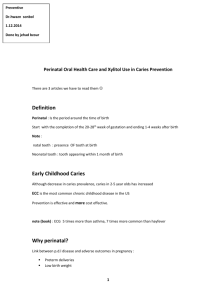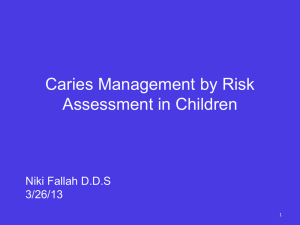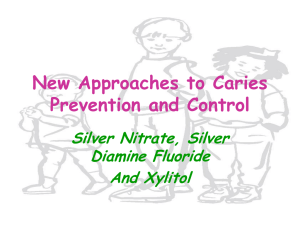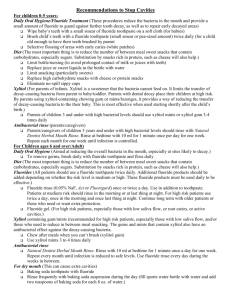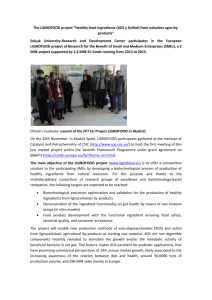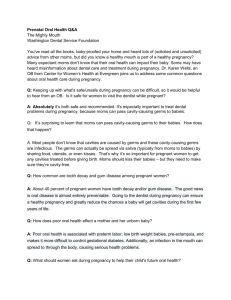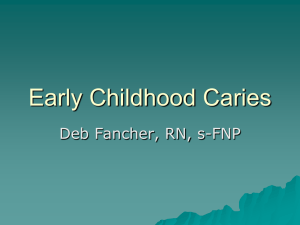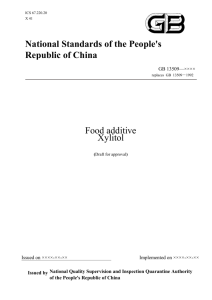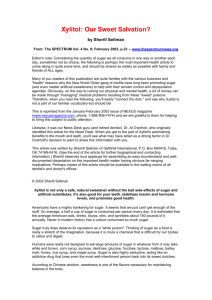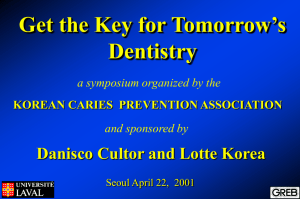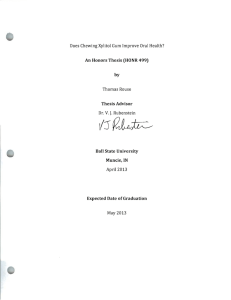File
advertisement
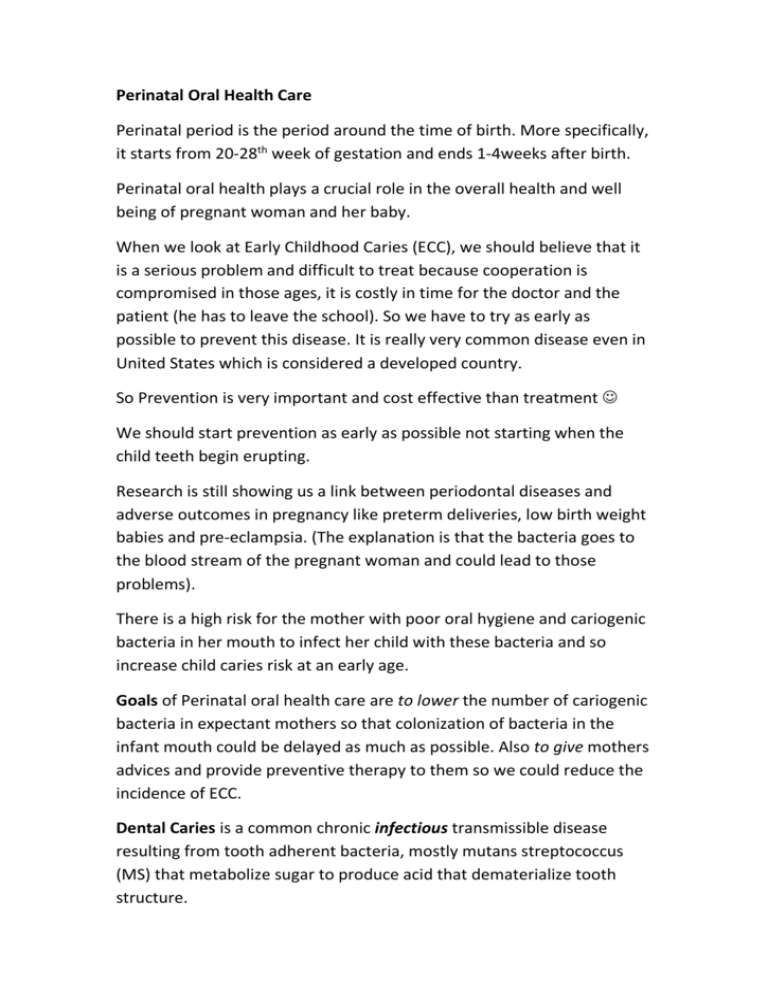
Perinatal Oral Health Care Perinatal period is the period around the time of birth. More specifically, it starts from 20-28th week of gestation and ends 1-4weeks after birth. Perinatal oral health plays a crucial role in the overall health and well being of pregnant woman and her baby. When we look at Early Childhood Caries (ECC), we should believe that it is a serious problem and difficult to treat because cooperation is compromised in those ages, it is costly in time for the doctor and the patient (he has to leave the school). So we have to try as early as possible to prevent this disease. It is really very common disease even in United States which is considered a developed country. So Prevention is very important and cost effective than treatment We should start prevention as early as possible not starting when the child teeth begin erupting. Research is still showing us a link between periodontal diseases and adverse outcomes in pregnancy like preterm deliveries, low birth weight babies and pre-eclampsia. (The explanation is that the bacteria goes to the blood stream of the pregnant woman and could lead to those problems). There is a high risk for the mother with poor oral hygiene and cariogenic bacteria in her mouth to infect her child with these bacteria and so increase child caries risk at an early age. Goals of Perinatal oral health care are to lower the number of cariogenic bacteria in expectant mothers so that colonization of bacteria in the infant mouth could be delayed as much as possible. Also to give mothers advices and provide preventive therapy to them so we could reduce the incidence of ECC. Dental Caries is a common chronic infectious transmissible disease resulting from tooth adherent bacteria, mostly mutans streptococcus (MS) that metabolize sugar to produce acid that dematerialize tooth structure. MS colonization of the infant can occur from the time of birth. Significant colonization occurs after teeth erupt because teeth provide a non-shedding surface adherence for the bacterial colonies. Although other areas like tongue furrows may harbor MS in pre-dentate infant. *Bacteria are transmitted from the mother to the child by VERTICAL TRANSMISSION. They found that genotypes of MS in infants are identical to those in the mother in many studies ranging from 24-100% symmetry. Factors that affect colonization of bacteria in the mouth of the baby include: - Magnitude of inoculums (how much bacteria were transferred) -Frequency of inoculation -Maternal level of MS in her mouth -Mother Oral hygiene -Periodontal disease -Snack frequency -Socioeconomic status *The mother should try to prevent any saliva to go to the baby’s mouth like kissing the baby, or tasting the food with the same spoon when feeding their children. So we should advice them to use different spoon HORIZONTAL TRANSMISSION is infection between members of the group like siblings of similar age or children in daycare center. A study of children with severe ECC revealed that non-maternal MS genotypes were identified in 74% of children. Recommendations for Perinatal health care **Caries risk assessment Its goal is to prevent disease by identifying and minimizing causative factors like microbial burden, dietary habits and plaque accumulation and to optimize protective factors like fluoride, fissure sealant and good oral hygiene. Basically we can categorize caries risk assessment when identifying patient caries risk into: Biological : Mother/caregiver( if she has a lot of caries then the possibility of infection is increased) Low socioeconomic status also increase caries risk Frequency of Snacking Protective factors: Fluoride application Regular dental care Clinical findings such as finding White spot lesions on teeth Cavities or fillings Presence of Plaque ** Anticipatory Guidance Anticipatory guidance for the mother and caregivers can help delay the onset and decrease the impact of MS colonization of the baby. Modification of the mother oral hygiene and diet and using topical chlorhexidine and fluoride can have significant effect on MS levels and so decrease infant’s caries risk. -Remember here that we are delaying bacterial transfer to the child and so decrease ECC incidence but eventually the child mouth will inoculate some levels of bacteria ** Preventive Strategies 1- Oral health education: Perinatal period is a good time to educate and perform dental treatment to expectant mothers. Pregnant ladies should be educated regarding oral health by providing ‘teachable moment’ in self-care and future child care. Early intervention from all health care providers (eg. physicians, dentists, nurses) is essential to ensure good oral health for mother and infant. So you should advice the mother to brush, apply fluoride, avoid undemanding breast feeding, and to start brushing for her child when the first tooth erupts and visit the dentist for checking up her child around his first birthday or 6 months after eruption of the first tooth. 2- Oral Hygiene: brushing with fluoridated tooth paste (1500ppm for adults and between 500to 1000ppm for children) and flossing by the mother are important to dislodge food and decrease bacterial levels. As we said before there is association between periodontal diseases and adverse pregnancy outcomes because in periodontal disease we have a resvoir for inflammatory mediators that threaten placenta and fetus and so increase likelihood of preterm delivery and so on. That is because high levels of prostaglandin in gingival cervicular fluid and blood could be associated with uterine muscles contractions leading to preterm delivery. Morning Sickness: frequently in early stages of pregnancy, mothers usually have nausea and vomiting so we have to prevent the possibility of erosion. Tell the mothers to rinse with water after vomiting with tea spoon of baking soda 3-Diet: Again, to decrease caries risk, we recommend fluoride toothpaste for mothers, chewing sugarless and xylitol containing gum, eating small amounts of nutritious healthy food throughout day. Food cravings may lead to the consumption of foods that increase the mother’s caries risk. *Usually educate mothers about bacterial colonies transmission (like avoid sharing utensils between the child and other family members). 4-Flouride: Basically giving it through toothpastes and fluoride rinses as additional method. Also could be applied in the clinic by the dentist. 5- Professional oral health care: every pregnant woman should have oral evaluation and be referred for preventive and therapeutic care. Removal of active caries and subsequent filling suppress MS reservoirs and minimize transfer of MS to the infant. *Safest time to perform dental treatment is in the second trimester (14th to 20th more specifically). Now we are going to talk about Xylitol Chewing gum: Xylitol is a 5carbon naturally occurring sugar. Chewing for 2 to 3 times daily has significant impact on mother-child transmission. Xylitol is anticariogenic that reduce MS levels in plaque and saliva by disrupting the energy production process in MS so leading to cell death or becoming less virulent (less acid production and lower adherence). There are many studies on it: 3 weeks or more of consumption by children leads to short and longterm reduction in salivary and plaque MS levels Some studies didn’t show long-term reduction Other studies have shown reduction of MS for up to 5 years after xylitol cessation AAPD (American Academy of Paediatric Dentistry) Recommendations: They recommend xylitol for moderate to high caries risk patients and then to reassess caries risk every 6 months. Dosage: total daily dose of 3-8 grams for adequate clinical effect Methods: it comes as gum, syrup and lozenges and many others Frequency: minimum of 2 times daily. AAPD doesn’t recommend xylitol gums and candies for children less than 4 years of age because of the risk of choking. So use syrup for them as 38grams per day in divided doses. A randomized trial of xylitol syrup (8 g/day) reduced early childhood caries by 50-70 percent in children 15 to 25 months of age For children more than 4 years old we have many age appropriate products such as chewing gum, mints, lozenges, snack foods such as gummy bears, 3 – 8 grams/day in divided doses. We could add xylitol to other products like energy bars and food, oral hygiene products (rinses, gels, floss, wipes), and toothpaste (5% formulations have shown reduced MS levels but still not available in the market) Xylitol is Safe in therapeutic doses. But in high doses could lead to osmotic diarrhea and gas that subside once xylitol consumption is stopped. To minimize gas and diarrhea, xylitol should be introduced slowly, over a week to acclimate the body to the polyol. If we look to all the studies together we find some low quality studies that said that toothpaste with fluoride and xylitol is more effective than fluoride alone. So unfortunately xylitol looks promising but we are still waiting for definite evidence in xylitol effect. Fluoride has very good evidence of its effectiveness but xylitol is not yet. Thank you It’s never too late Hussain Alhawaj
